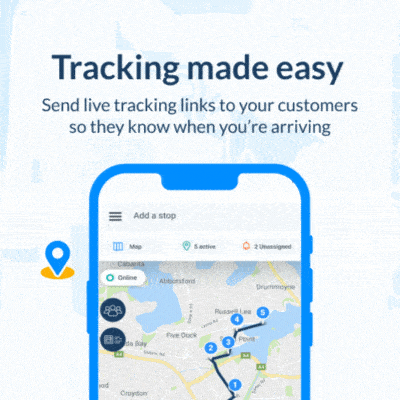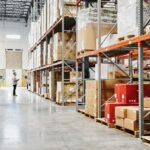In the latest announcement by the Reserve Bank of Australia its key interest rate had been left unchanged. Governor Phillip Lowe indicated that while inflation had passed its peak, the economic outlook remained uncertain.
This might be seen as good news, however there are still widespread concerns as skepticism remains. Last month monetary policymakers increased the benchmark rate by 25 basis points to peak at 4.1% – the highest since 2012.
Businesses are taking measures, including the Australia Post, which has implemented a price hike of up to 10% on parcel delivery. This is to soften the blow of increasing costs, in order to stay afloat.
Will more e-commerce increase parcel delivery prices?
Locate2u CEO Steve Orenstein believes more logistics companies might follow suit. “Everyone’s been waiting for this to happen in the industry. Everyone’s experiencing increased cost and fuel increased costs with drivers.”
Businesses will now have to think out of the box. How to get the product to their customers faster, but still in a cost effective manner.
Is it fair to increase parcel delivery prices?
It’s important to compare prices from a wide variety of courier providers. Do your homework first, like Orenstein puts it. “One of the things that a lot of e-commerce or retail providers don’t think about is they could offer a delivery experience for the same price, but to a local area. Local delivery, if you’ve got volume, you can make that really cost effective. You can improve that customer experience, but also it’s increasing your revenue by getting more business.”
Impact of inflation on last-mile delivery
Global inflation, uncertain supply chain and growing consumer demands have an impact on last-mile delivery. A retailer must keep in mind that the cost of delivery is increasing and delivery options provided to customers should still allow the business to grow in a competitive market. Experts warn that it’s better to increase the delivery options to attract more customers.
“When you are thinking about delivery and how do I look at cost savings, always think how do I get more density into those particular (delivery) services,” suggests Orenstein. “Then negotiate what those prices are going to look like.”
However retailers running their own fleet of drivers should be thinking about how to drive more density into certain time windows. Orenstein says the more customers reached during a specific time slot, will reduce the overall cost of last-mile deliveries. “It also means that a driver is gonna pick up more parcels. There’s going to be less time spent in the store, because I’m walking in there picking up those 10 parcels rather than two parcels, and then go off and go do those 10 parcels in one go.”
Why are cheaper last-mile delivery costs not wise?
Some delivery options might sound more affordable than others, but in the long run there are some landmines to look out for. Making use of a driver for last-mile delivery through a third party seems like a good plan, but make sure it’s the right service provider for your product. It’s the last interaction a customer has with the online business. This will create a lasting impression and it better be a good one to ensure the customer returns.
“If you look through a lot of ecommerce businesses, and you look at the bad reviews that you see, it’s often not about the product. It’s often about the delivery experience. You want to make sure that you are measuring that delivery experience,” said Orenstein. He warns that reviews live on the internet even after the problem has been resolved with the customer. “You want to understand the bad reviews and why customers have given bad reviews. But also make sure you capture that review before it goes into a public interface, like a Google review, where you can never change that’s there for the lifetime of your business.”
About the author
Mia is a multi-award-winning journalist. She has more than 14 years of experience in mainstream media. She's covered many historic moments that happened in Africa and internationally. She has a strong focus on human interest stories, to bring her readers and viewers closer to the topics at hand.













